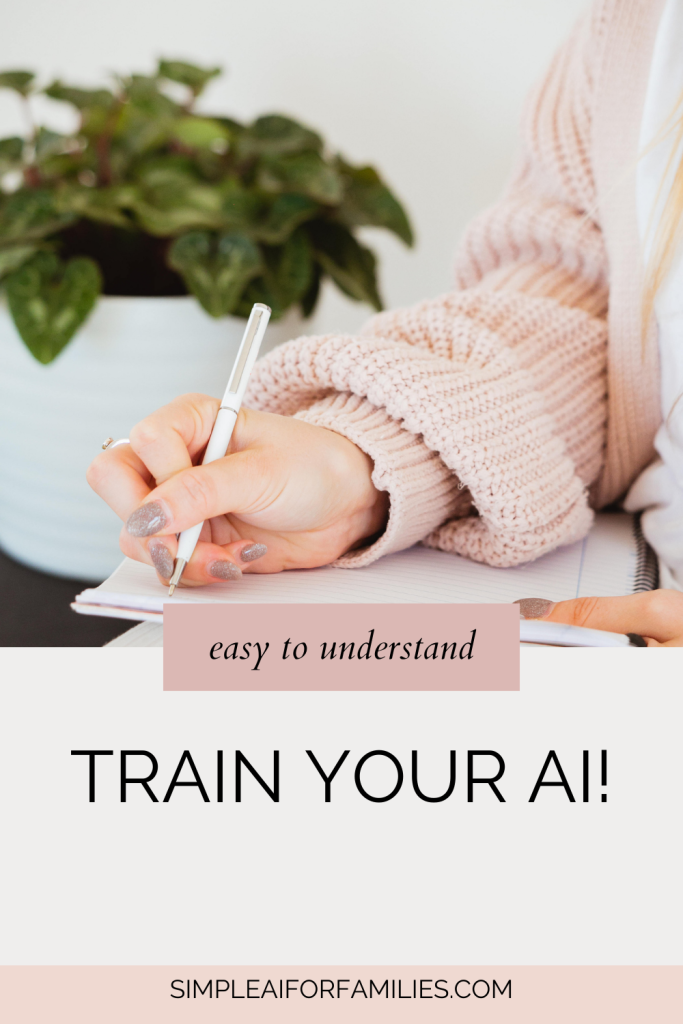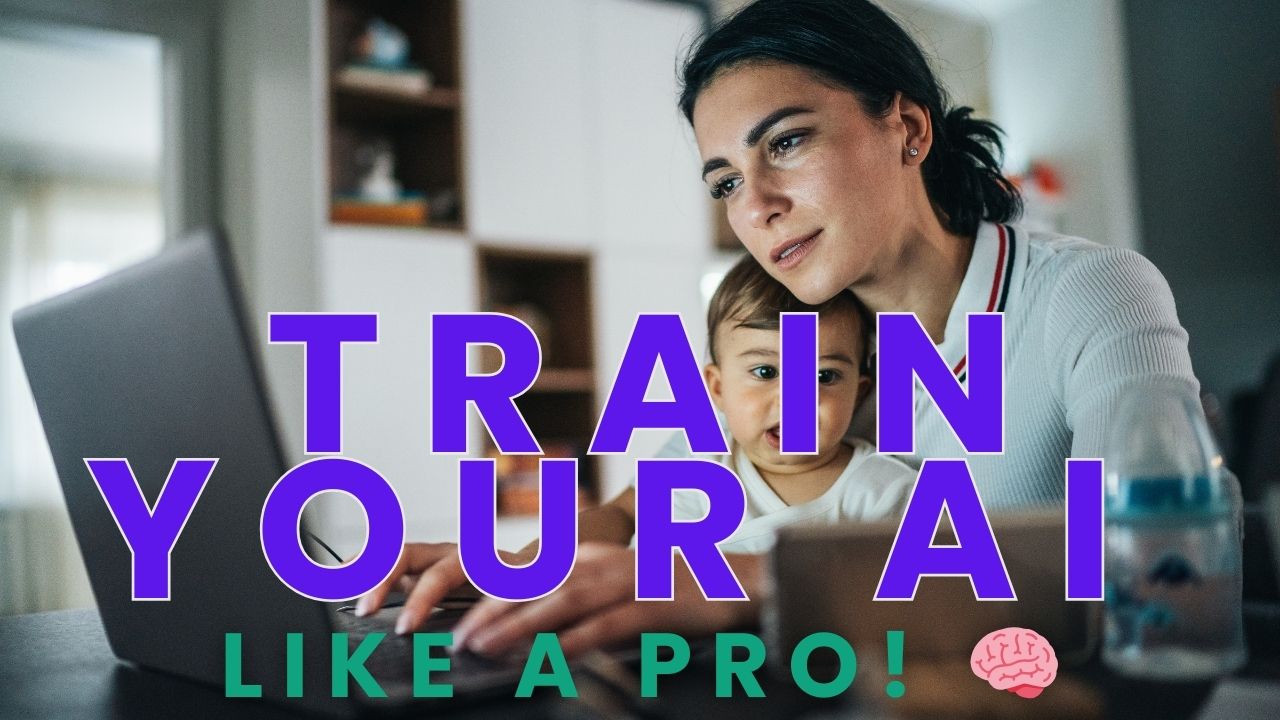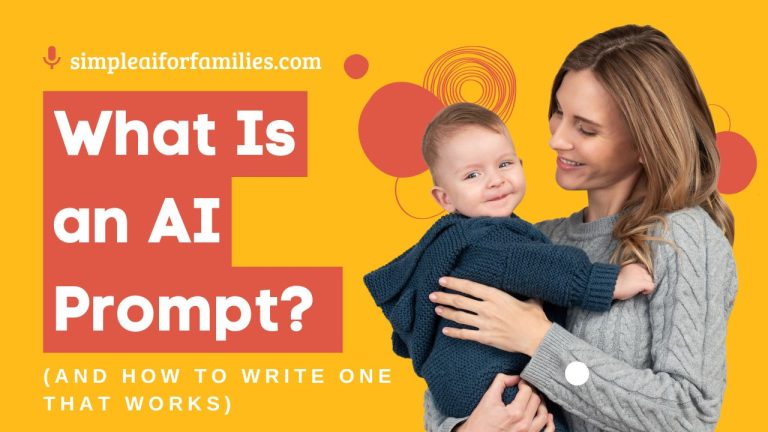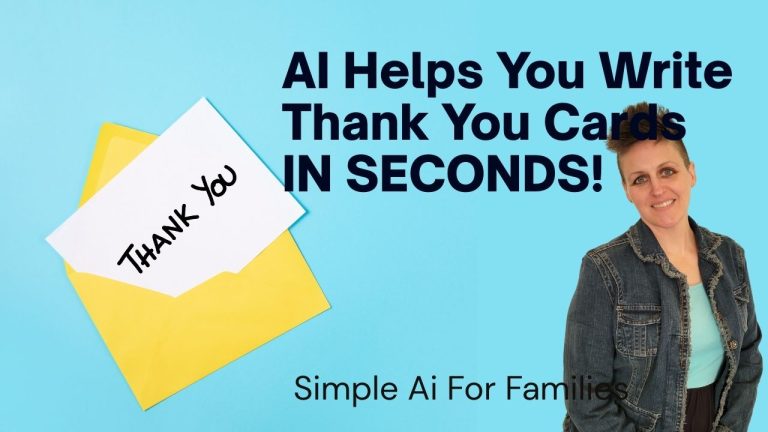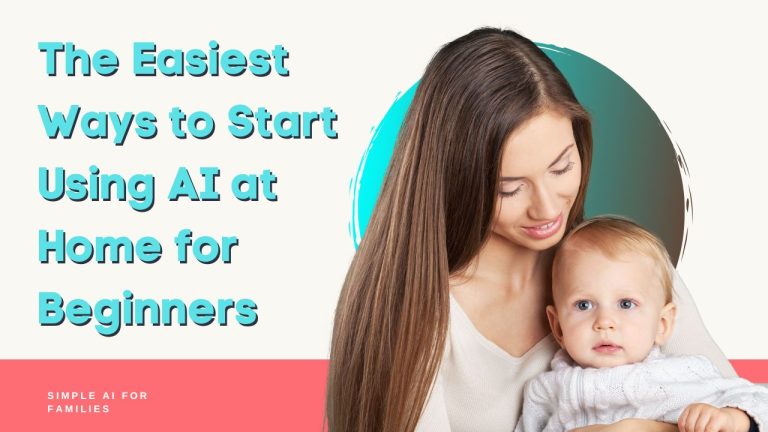Train a Thread in AI (So It Gets Smarter Over Time)
Is the idea of training AI intimidating? It doesn’t have to be. Really, you’re just teaching it the kind of responses you want and the information you’re looking for. Think of it like this: when you scroll through YouTube and “like” videos, you’re training YouTube to show you more of what you like. Training AI is similar. Bonnie from Simple AI for Families is here to break it down and show you how it’s done.
Demystifying AI Training
What Does “Training AI” Really Mean?
Training AI simply means teaching it the types of responses and information you want. Just as YouTube learns your preferences by tracking the videos you watch, AI learns from your interactions.
For example, Bonnie trained her ChatGPT to provide verbal encouragement. She needs to hear “you’re doing the right thing, keep going.” So, she trained her AI to offer that support.
It’s also important to tailor AI’s behavior to your preferences. Some people might train their AI to be aggressive or rude, but Bonnie prefers an encouraging tone. This way, she gets a positive experience and feedback.
AI as a Learning Process
Think about when you were a kid. You learned by trial and error. You fell down, you got hurt, and you figured out how to walk without falling. AI learns in much the same way. It gets feedback, adjusts, and improves over time. Essentially, AI is learning from you.

AI for Everyone: Bridging the Generational Gap
Addressing the Overwhelm
Technology is changing fast. It’s easy to feel overwhelmed, especially if you’re from a generation that grew up without the internet or cell phones. Bonnie, who identifies as Gen X, understands this struggle. She encourages everyone to learn about AI and decide how they want to use it. Learning AI basics for families can be a great place to start.
Finding Balance with Technology
Technology offers convenience and amazing possibilities. But it can also be annoying. While Bonnie would love to use a rotary phone again, modern life makes that difficult. Finding a balance is key: Leverage the benefits of technology while minimizing its drawbacks.
Step-by-Step Guide to Training a Thread in AI
Understanding Threads
A “thread” is simply a conversation you’re having within an AI program. While this guide focuses on ChatGPT because it’s widely accessible, the principles apply to other AI platforms like Claude.

The Importance of Consistent Feedback
Consistent feedback is essential for training a thread effectively. You want one person training the thread so the AI understands that person’s preferences and needs. That doesn’t mean you can’t incorporate information from other sources, though.
Real-World Applications: The Alexi Example
Bonnie shares an example of using ChatGPT to summarize Alex Hermozi’s videos. Because she doesn’t always have time to watch the full 45-minute videos, she uses ChatGPT to get a summary. This helps her decide if the topic is something she needs to delve into further. This is just one way AI can help you extract valuable information from lengthy content.
Treating AI Like an Assistant
Remember, AI is an assistant, not a replacement for your own intelligence. You have to train it from the beginning and correct its mistakes as you go. Don’t treat it like it’s getting dumber over time. Instead, be consistent and clear about what you want it to do.
For example, if you’re teaching AI to create a meal plan for your family, start by telling it: “I want you to act like a personal chef who specializes in family meals. Make sure the meals are big enough for leftovers, and we use leftovers from previous meals in upcoming meals to avoid food waste.”

Setting Parameters and Giving Specific Instructions
When training AI, be specific. Include dietary restrictions, preferences, and other relevant information. For example: “We have nut allergies, so no nuts. Someone is intolerant to cucumbers. We need finger-friendly options for the kids, and we’re trying to keep it low-sugar and low-carb because of insulin resistance.” The more parameters you give, the better the output will be.
Reviewing and Refining AI’s Output
Once the AI gives you its output, review it and make adjustments based on your preferences. If it suggests a meal with pork and you don’t like pork, remove it. Remember, you’re the boss.
There’s a difference between treating AI as an assistant versus a consultant. A consultant gives advice, but you’re not obligated to take it.
Simplified Steps for Training a Thread
Step 1: Start a Thread and Define the Topic
Start a new thread in ChatGPT and specify the topic you want to discuss. For example, you might say, “We’re going to be talking about budgeting, and I want you to keep in mind that I only make this much money a month. Here are my bills. I want you to help me come up with a better way to pay off my credit card or reduce the interest rate on my loans.”
Step 2: Give Feedback and Refine the Output
Review AI’s feedback and provide additional information or adjustments as needed. You could even upload a CSV file from your bank to analyze spending habits.
AI as Your Personal Specialist
Think of AI as your personal fill-in-the-blank: mechanic, chef, accountant, or even a budgeting specialist. It’s accessible 24/7 and can help you become better in various aspects of your life.
Real-World Use Cases: Erin Condren Planner Example
Here’s another practical example: Let’s say you use an Erin Condren planner. You could give AI a link to the planner and ask for suggestions on how to maximize productivity. The AI can research the planner and provide tailored advice.
Call to Action
What specific areas are you interested in improving with AI? What specialty or skill are you trying to develop with AI’s help? Share your thoughts in the comments!
Don’t forget to like and subscribe for more AI tips. And if you’ve used threads before, share your experiences and tips in the comments!
You can also grab your free AI Quick-Start Guide and the free Starter GPT Pack for more resources.

Utilizing Custom GPTs
What are Custom GPTs?
Custom GPTs are specialized versions of ChatGPT tailored for specific tasks. You can find them in the ChatGPT Explore tab.
Available GPTs
Bonnie has created several custom GPTs for families, including:
- Chore Captain GPT: For easy chore planning.
- Kitchen Companion: For meal help and grocery lists.
- Budget Buddy: For simple family budgeting.
- Prompt Starter Pack: To learn how to talk to AI effectively.
- What Can Chat Do?: To get AI ideas without the tech-speak.
How do you plan to use AI in your family’s routine? Let us know in the comments!
Join the free Facebook Group and grab the free AI Made Simple Printable for even more resources.
In conclusion, training AI is about teaching it what you need and want. With consistent feedback and a clear understanding of how AI learns, you can use it to improve many areas of your life. Remember to treat AI as an assistant, provide specific instructions, and review its output to ensure it meets your needs.
FAQ: Training Threads in AI Chatbots
What does “training a thread” in AI mean?
Training a thread refers to setting up a chat session where the AI uses past messages in that session to respond better. The AI draws on this chat history as context, not on a custom-trained memory per thread.
How do I start a new thread with an AI assistant?
You start a thread by sending an initial message to the assistant. Each thread is its own conversation. Most chatbot builders and APIs offer a “create thread” or “new conversation” option.

Can I train the AI on my own data within a thread?
Within a single thread, the AI won’t permanently “learn” from your data. It only remembers messages in that session. If you want true training, upload data to the assistant or fine-tune the base model (if supported).
What happens when a thread’s context limit is reached?
Most AI systems have a limit to how much conversation history they can use at once. When the limit is hit, older messages “fall off” — the AI forgets them, and responses may be less aware of early context.
Can I delete a thread or reset the conversation?
Yes. Most platforms let you delete or clear threads. This removes or hides the chat history, starting fresh the next time.
Does the AI model improve with feedback from threads?
Individual threads don’t train the AI in real time, but user interactions and feedback help AI providers improve models over time. If you want better responses, rate or report answers as needed.

How do I make a bot remember user preferences across threads?
True memory across threads needs a database or storage layer that saves user info outside the chat. Link data like names or favorite topics to a user account, then feed that info back at the start of each new thread.
Can I adjust the AI’s behavior during a thread?
You can guide AI responses by providing clear instructions or context in your messages. For deeper changes, adjust the assistant’s “system prompt” or configuration before the thread starts.
What’s the best way to “train” an AI to answer FAQs?
Feed the AI clear question-and-answer pairs relevant to your use case. The more examples you provide, the better. Use structured data or import tools offered by your chatbot platform.
Is it possible to see old threads or conversation history later?
Some platforms save threads for a set period (like 60 days). You can review or export past sessions if your tools allow it. Check your platform settings for storage and privacy controls.
Want help training your chatbot or managing AI threads? Let us know what you’re building!
Share On Pinterest!

